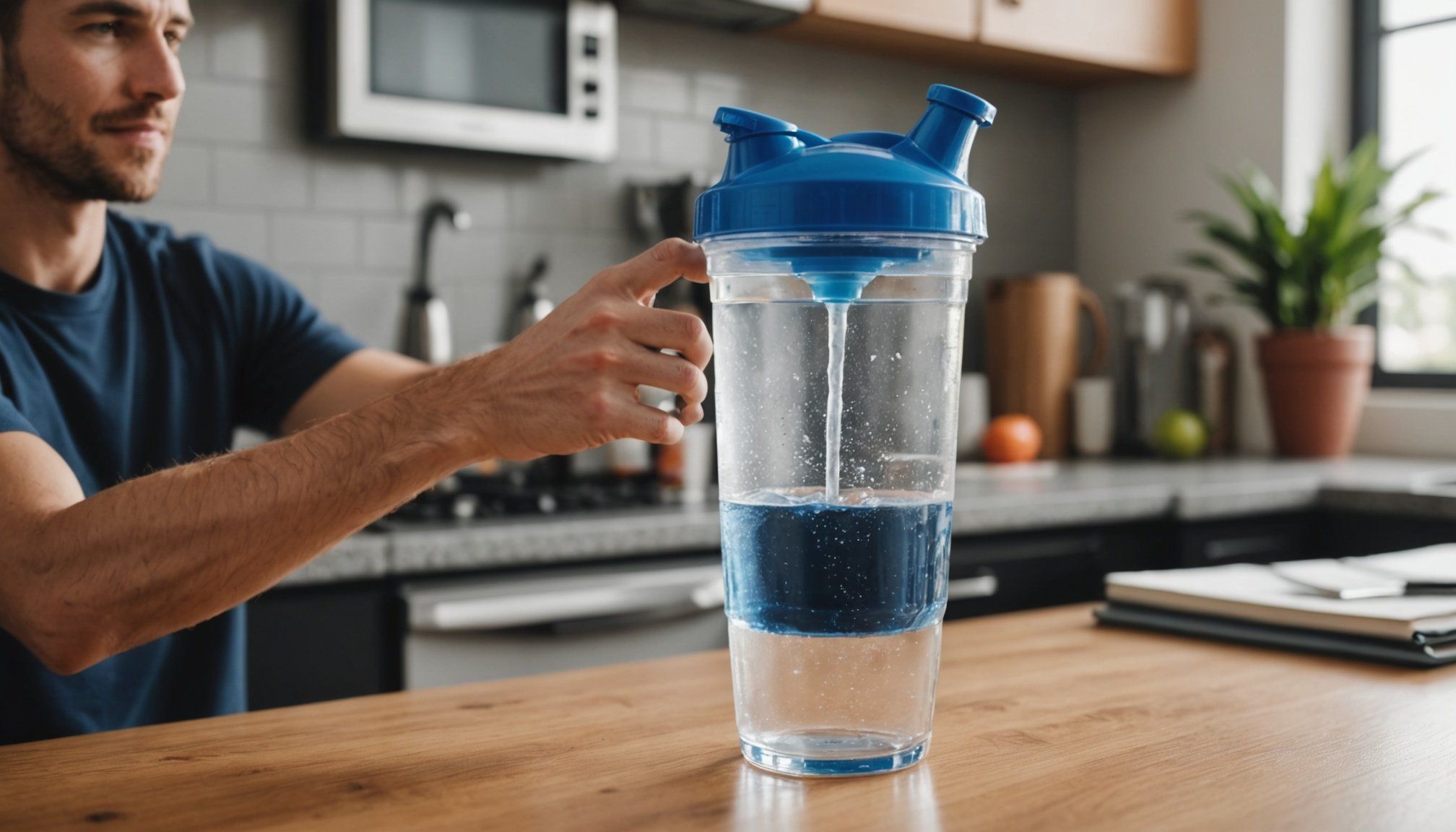Importance of Hydration
Understanding the importance of hydration can significantly boost your overall health. Water is essential for numerous bodily functions, including maintaining body temperature, lubricating joints, and aiding digestion. Moreover, the health benefits of staying hydrated are extensive — a well-hydrated body can efficiently transport nutrients and oxygen to cells, helping to maintain optimal physical and mental performance.
Dehydration can lead to reduced cognitive function and physical fatigue, affecting daily activities. The impact of dehydration on performance is particularly evident during exercise, where even minor dehydration levels can lead to a noticeable decline in endurance and strength. It is a leading cause of headaches, dizziness, and irritability.
Additional reading : Unleash stronger ankles: the top 3 essential exercises for high heel lovers
Staying adequately hydrated means prioritising your water intake importance daily. This may involve consciously increasing your water consumption. A variety of foods and beverages contribute to your hydration goals, yet water remains the most beneficial source. Recognising thirst and responding promptly can help mitigate the effects of dehydration, supporting your body’s natural regulation processes. Incorporate water-rich foods and drink regularly to ensure hydration needs are consistently met. Prioritising water consumption not only supports bodily functions but also enhances energy levels and concentration, promoting overall well-being.
Recommended Daily Water Intake
Understanding daily water intake is essential for maintaining hydration and overall health. The typical guideline suggests consuming around 2.7 litres (91 ounces) for women and 3.7 litres (125 ounces) for men daily from all beverages and foods. Factors such as climate, diet, and personal health conditions can alter these recommendations. For instance, individuals living in hotter climates or engaging in vigorous activities require increased water consumption to compensate for fluid loss through sweat.
Also read : Ultimate guide to sustainable fashion: key factors for selecting eco-friendly recycled clothing
Age, gender, and activity level also influence personal hydration needs. Children have different requirements based on growth stages, while older adults may need to consciously monitor intake, as thirst sensation diminishes with age. Pregnant or breastfeeding women are advised to increase their water intake to support their body’s additional demands.
Remember, thirst is not always the best indicator of the body’s needs. By regularly monitoring your hydration status, one can ensure adequate intake. Consider the colour of your urine as an informal gauge; pale, straw-coloured is often a sign of proper hydration. Regardless of lifestyle, making a conscious effort to understand hydration guidelines promotes wellbeing and supports bodily functions.
Practical Tips for Staying Hydrated
Navigating the journey to stay hydrated can be straightforward with some simple adjustments to your routine. By focusing on improving your hydration habits, it is possible to boost your daily water consumption efficiently.
Setting Reminders
A practical way to ensure daily water consumption is to set reminders. Phone alarms or hydration apps can be crucial in prompting you to drink regularly. Visual cues, such as placing a water bottle in noticeable places, also serve as constant nudges. Establishing a routine around mealtimes for drinking water can significantly enhance your hydration efforts.
Flavoring Water
If plain water doesn’t appeal, consider flavoring water by adding fresh fruits or herbs. This can make drinking water more enjoyable, increasing your intake levels. Experiment with various infused water recipes to find the combinations you love.
Using Hydration Tracking Tools
Utilizing hydration tracking tools is another strategy. Numerous apps and devices allow you to monitor your water intake throughout the day. These tools can seamlessly integrate into everyday life, helping you analyze your progress and adjust your habits as needed, ensuring better hydration control.
Strategies for Different Lifestyles
For Active Individuals
Ensuring hydration for active individuals is essential for optimal performance. Hydration before, during, and after exercise is crucial to maintain energy levels and prevent adverse effects of dehydration such as muscle cramps and fatigue. Sports drinks enriched with electrolytes can be beneficial, especially during intense workouts, as they replenish lost fluids and vital nutrients. Remember, though, that these should complement — not replace — regular water consumption.
Adjusting your water intake importance according to your workout intensity is vital. For aerobic exercises lasting more than an hour, aim for an additional 500 to 1000 ml of fluids. Shorter, less intense activities might not necessitate such increased intake but still demand attention to hydration. A good guideline is to consume about 200 to 300 ml every 15 to 20 minutes during exercise.
Listening to your body’s signals, like thirst or reduced endurance, can help tailor your hydration strategies. Investing in a reliable water bottle to carry during activities can serve as a convenient reminder to hydrate consistently. Keeping a hydration log might also aid in tracking progress and pinpoint areas needing improvement, especially for those engaged in regular physical activities.
Visual Aids and Infographics
Visual representations, such as hydration visuals and infographics, play a crucial role in understanding and optimising your water intake. These aids illustrate hydration guidelines and make complex data more accessible and engaging.
Infographics for daily water intake can effectively demonstrate recommended levels of hydration based on various factors, such as age and activity level. These visual tools simplify the information, making it easier for individuals to grasp their daily needs and adjust accordingly. An infographic might show an ideal intake breakdown, helping you understand the proportion of hydration derived from both beverages and foods.
Using hydration charts allows for easy tracking of personal hydration levels. These charts can visually reflect daily or weekly patterns, helping identify trends or needs for improvement. By marking water consumption against target goals, they provide immediate feedback on progress, motivating consistent effort towards maintaining optimal hydration.
Incorporating charts and infographics into daily routines can encourage adherence to hydration goals. Whether through printed materials in visible places or digital formats on devices, these tools guide planning and decision-making. Ultimately, visually appealing aids serve as reminders that reinforce the importance of meeting one’s hydration needs effectively and efficiently.
Frequently Asked Questions about Hydration
Navigating through hydration FAQs can clarify common misconceptions and provide reliable insights.
Are Caffeinated Beverages Dehydrating?
Caffeinated drinks, in moderation, do not significantly dehydrate you. Instead, they contribute to daily water intake. Moderate coffee or tea consumption is part of a hydrated lifestyle, yet they should not replace water.
How Do I Know If I’m Dehydrated?
Checking the colour of your urine is one of the simplest methods. A pale, straw-coloured hue suggests good hydration, while dark yellow may indicate insufficient hydration. Also, feeling thirsty, experiencing dry mouth, or noticing decreased physical and mental performance can be signs of dehydration.
Are Eight Glasses of Water Sufficient?
The “eight glasses a day” rule is an approximate guideline. Individual needs vary based on factors like climate and activity level. Follow current hydration guidelines personalised to your body’s requirements instead.
Does Food Add to My Hydration?
Yes, food can significantly contribute to overall hydration. Fruits and vegetables contain considerable water amounts, supporting water intake importance and helping maintain optimal hydration levels.











